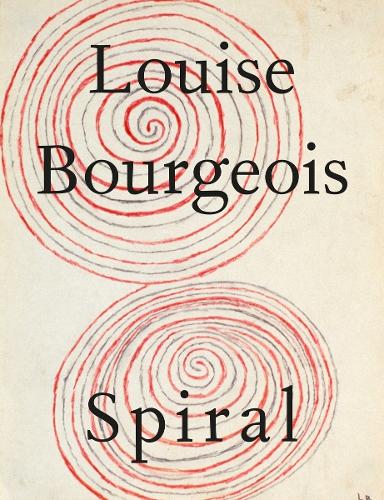
Louise Bourgeois: The Spiral
(Hardback)
Available Formats
Publishing Details
Louise Bourgeois: The Spiral
By (Author) Louise Bourgeois
Damiani
Damiani
1st June 2019
Italy
Classifications
General
Non Fiction
709.2
Physical Properties
Hardback
84
730g
Description
Spirals are a recurring motif in the work of Louise Bourgeois, including her sculpture, painting, and drawings from as early as the 50s through 2010 the year of her death. It has two directions. Where do you place yourself, at the periphery or at the vortex The spiral is simultaneously "the fear of losing control" and the experience of "giving up control; of trust, positive energy, of life itself." In another book Bourgeois is quoted as saying "The spiral is important to me. It is a twist. As a child, after washing tapestries in the river, I would turn and twist and wring them... Later I would dream of my father's mistress. I would do it in my dreams by wringing her neck. The spiral - I love the spiral - represents control and freedom." In materials as diverse as wood, steel, bronze, latex, marble, plaster, resin, hemp, lead, ink, pencil, crayon, woodcut, watercolor, and gouache, Bourgeois investigates every imaginable manifestation of the spiral, from graphic patterns to graphite whorls, wobbly orbits to chiseled vortices, twisted columns to coiling snakes, staircases, and pyramids. The cursive blue-paper word drawings, in English and French, complement the purely visual works by conveying the spirit of Bourgeois' poetry in extraordinary pictorial forms.
Reviews
From the shape of galaxies to that of a snail's shell, from some of the oldest petroglyphs to the art of Hilma af Klint, the spiral is ubiquitous in art and nature and transfixing to the human eye. Louise Bourgeois's fascination with its swirling geometry was enough to warrant Spiral, an entire volume devoted to her myriad inventions upon this archetypal form.--Albert Mobilio "Bookforum"
Author Bio
Louise Bourgeois was born in Paris in 1911 and lived in New York from 1938 until her death in 2010. She was named Officer of the Order of Arts and Letters by the French minister of culture in 1983. Other honors included the Grand Prix National de Sculpture from the French government in 1991; the National Medal of Arts, presented to her by President Bill Clinton in 1997; the first lifetime achievement award from the International Sculpture Center in Washington, DC; and election as a fellow of the American Academy of Arts and Sciences. In 1993 she was chosen to represent the United States at the Venice Biennale. Her work appears in the most important museum collections worldwide and has been the subject of several major traveling retrospectives organized by the Tate Modern, London, Centre Georges Pompidou, Paris, the Brooklyn Museum, and the Kunstverein, Frankfurt.
